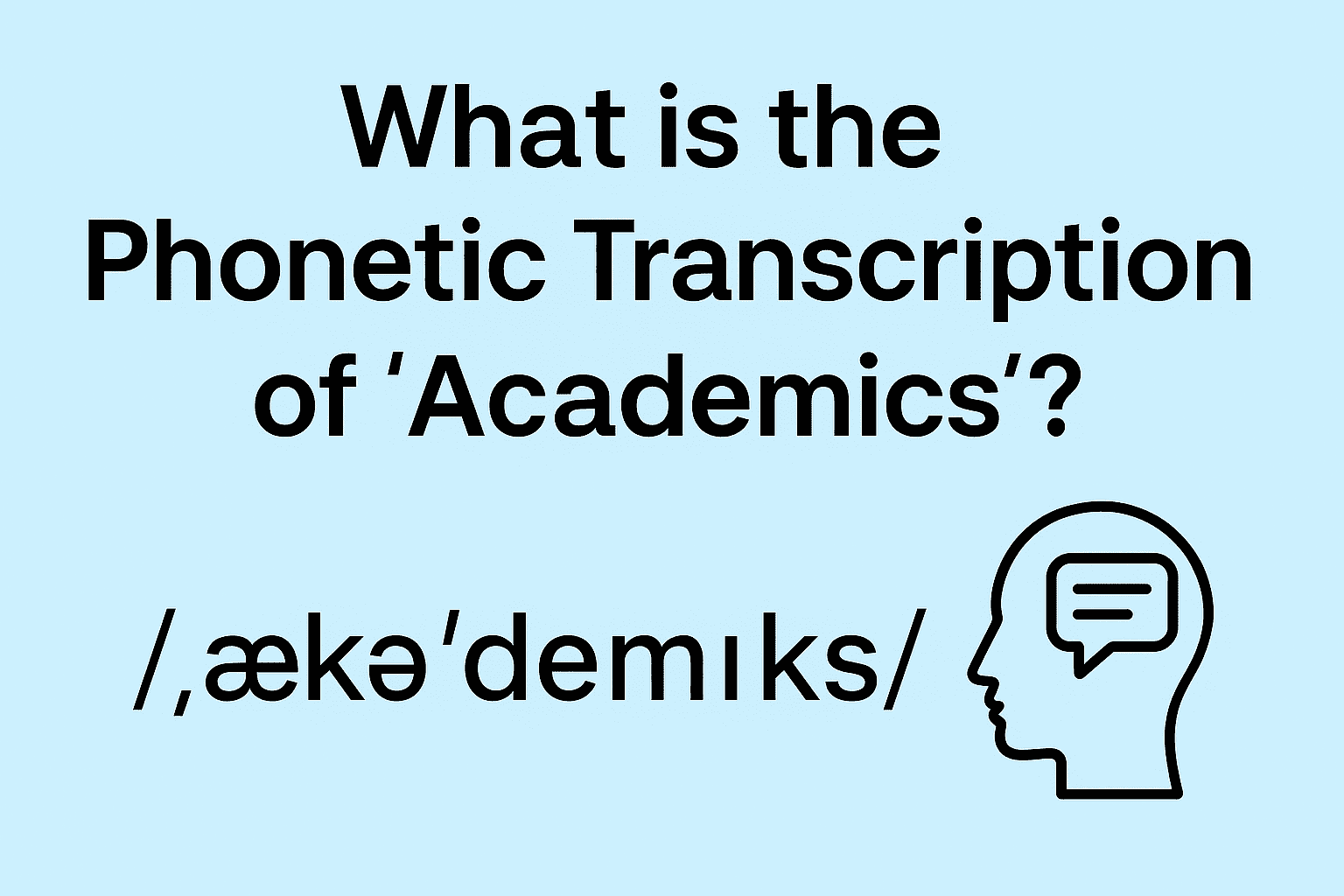Phonetic transcription is a system of symbols used to represent the exact sounds of words. For “academics,” the transcription /ˌækəˈdɛmɪks/ indicates four syllables with a primary stress on the third one. The beginning syllable has secondary stress, which subtly influences rhythm and intonation. This allows learners, educators, and linguists to identify not just the letters in the word, but the sounds they represent.
Phonetic transcription is especially important in academic contexts where correct pronunciation reinforces precision in teaching, public speaking, and research presentations. Mispronouncing terms can affect comprehension and authority, especially among non-native speakers or interdisciplinary audiences.
According to the Cambridge English Pronouncing Dictionary (2023 edition), IPA-based transcriptions remain the most reliable method of documenting pronunciation across regional and dialectal variations.
How to Understand Phonetic Transcription
The IPA is an internationally recognized system for representing sounds consistently. Each symbol matches a phoneme (distinct speech sound), eliminating ambiguity caused by irregular English spelling. For example:
- /æ/ represents the short “a” sound in cat
- /k/ denotes the hard “k” sound in cat or school
- /ə/ is the schwa, the most common vowel in English, pronounced as a short, unstressed sound
In “academics,” these symbols combine with stress markers — the raised vertical mark before a syllable (ˈ) signifies primary stress, and the lowered mark (ˌ) indicates secondary stress. The transcription can be applied to teaching pronunciation to language learners, preparing for speeches, or developing AI-based speech recognition models.
Why Use the IPA System for Academic Terms?
For educational professionals, linguists, and researchers, the IPA offers unmatched clarity. Unlike spelling guides or approximate sound-alike notations, IPA removes guesswork. This is particularly important in fields like linguistics, phonology, language teaching, and international academic collaboration. For instance, in conferences where multiple English accents meet, the IPA provides a universal reference, reducing misunderstandings.
In academic publications and research recordings, precise pronunciation ensures credibility. This is why academic institutions often integrate IPA-based references in textbooks, dictionaries, and learner resources.
Role of Transcription in Academia
Beyond phonetics, transcription — converting speech into text — is critical in research, lectures, and interviews. Academic transcription services specialize in accurately converting scholarly audio or video materials into written form, handling specialized jargon and technical vocabulary. This is where choosing the best transcription services matters — they use a hybrid of AI for speed and human editors for accuracy, ensuring contextual precision.
With the rise of online education, podcasts, and recorded lectures, transcription not only improves accessibility for learners with hearing impairments but also allows researchers to index and analyze spoken content more effectively. Renowned linguistics scholar Peter Roach emphasizes that accurate transcription is as fundamental to language documentation as precise data is to science.
Conclusion
The phonetic transcription of “academics” — /ˌækəˈdɛmɪks/ — is a vital reference for accurate pronunciation. By combining phonetic literacy with reliable transcription practices, educators and researchers can maintain clarity and professionalism in communication across academic and global contexts.
Frequently Asked Questions (FAQs)
Q1: How can I learn phonetic transcription?
A1: Start with understanding IPA symbols, practice with simple words, use online IPA transcription tools, and watch educational videos or take linguistic courses.
Q2: Is the phonetic transcription the same in British and American English?
A2: There can be slight differences due to accent and pronunciation norms, but for “academics,” the IPA transcription generally remains consistent.
Q3: What makes academic transcription services different?
A3: They specialize in jargon and terminology specific to scholarly fields, ensuring accuracy in complex content such as lectures and research interviews.
